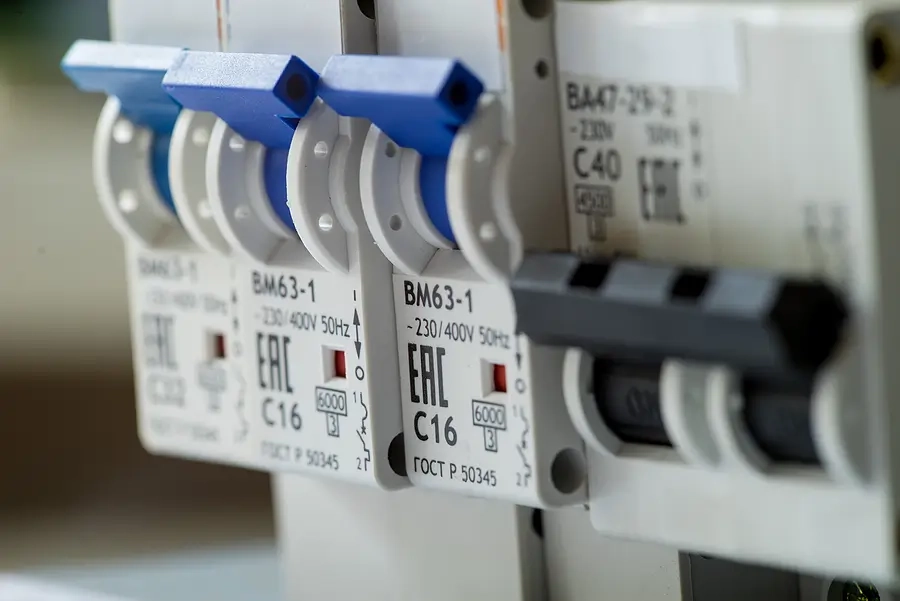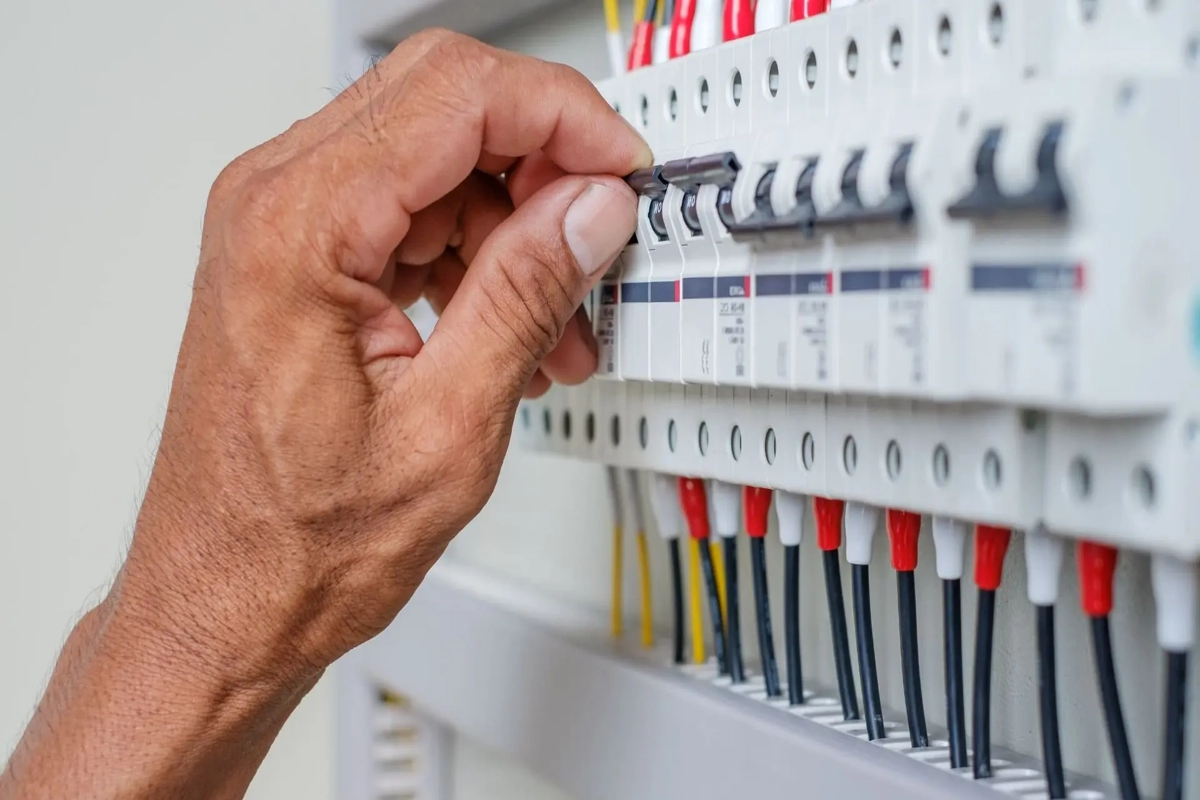Your home’s circuit breakers are the silent guardians of your electrical system, working 24/7 to protect your family from electrical fires and dangerous overloads. But what happens when these crucial safety devices begin to fail? According to statistics, over 51,000 electrical fires occur in U.S. homes annually, leading to more than 1400 injuries, 500 deaths, and property damage, with faulty circuit breakers often playing a contributing role.
Recognizing faulty circuit breaker symptoms early can mean the difference between a simple repair and a catastrophic electrical emergency. From subtle warning signs like flickering lights to more obvious red flags like burning smells, understanding these symptoms empowers homeowners to take swift action. Early detection saves both lives and property, let’s explore the critical warning signs every homeowner should know.
Critical Faulty Circuit Breaker Symptoms Every Homeowner Must Recognize

How Circuit Breakers Protect Your Home (And What Happens When They Fail)
A circuit breaker is a safety device that is an essential component of your home’s electrical system. It’s designed to protect against electrical overloads, short circuits, and other issues. The circuit breaker acts as a switch that automatically shuts off power flow when it detects irregularities in the current. Think of them as the emergency brakes for your electrical system—without them functioning properly, your home becomes vulnerable to devastating electrical fires.
The average lifespan of a circuit breaker is between 30 and 40 years. However, various factors can cause them to fail prematurely, including environmental conditions, electrical surges, and manufacturing defects. When circuit breakers malfunction, they can fail to trip during dangerous conditions, potentially allowing electrical faults to escalate into house fires.
The Most Dangerous Faulty Circuit Breaker Symptoms That Demand Immediate Action
Burning Smell from Electrical Panel – A Fire Emergency Waiting to Happen
If you notice a burning odor coming from the panel, do not ignore it. This could mean that there is a potentially dangerous insulation or wiring problem that is causing the panel to overheat. This is perhaps the most critical warning sign of circuit breaker failure and requires immediate action.
A burning smell from your circuit breaker can mean either a wire’s insulation is burning or the breaker is overheating and melting. The smell typically resembles burning plastic or rubber and indicates that electrical components are operating beyond their safe temperature limits. When electrical fires start in wiring, you’ll first notice the acrid, chemical smell of burning plastic and rubber as the wire insulation is the first thing to burn.
Immediate Actions to Take:
- Turn off the main power supply immediately if you can safely access it
- Evacuate the area and call 911 if you detect smoke or flames
- Contact a licensed electrician for immediate inspection
- Do not attempt to investigate the source yourself
Circuit Breaker Overheating – Touch Test Warning Signs
The circuit breaker’s temperature should not exceed 60 °C (140 °F). This means the circuit breaker’s plastic components should be touchable without a burning sensation. If your circuit breaker feels excessively hot to the touch, this indicates dangerous overheating conditions.
A hot breaker is a safety risk and should not be ignored. Overheating typically occurs due to:
- Overloaded circuits drawing too much current
- Loose electrical connections creating resistance
- Age-related deterioration of internal components
- Poor ventilation around the electrical panel
Safe Temperature Assessment:
- Use the back of your hand to briefly test breaker temperature
- Hot breakers should be addressed immediately by a professional
- Never attempt to cool down hot breakers with water or fans
Visible Scorch Marks and Physical Damage
The first sign you might notice immediately is damage marks to outlets or around the circuit breaker. Appliances might also be failing due to melted wires, which is a good indication that your electrical panel is affected. Visible damage is often the result of sustained overheating or electrical arcing.
When you notice evident marks near appliances, outlets, or the electrical box, shut the power to your house since it means a wire just melted and your home could be on fire. Look for:
- Black or brown discoloration around breakers
- Melted plastic components
- Warped or deformed breaker housings
- Charred or discolored wiring
These visual indicators represent severe electrical problems that have already caused damage and pose immediate fire risks.
Common Faulty Circuit Breaker Symptoms That Signal Electrical Problems
Frequent Circuit Breaker Tripping – More Than Just an Inconvenience
If a circuit breaker trips frequently, it’s a signal that there is a chronic issue that needs to be addressed. While occasional tripping during overload conditions is normal, frequent or unexplained tripping indicates underlying problems.
If overloading and short-circuiting have been ruled out as reasons for the breaker tripping, and the circuit breaker won’t stay on, the cause is likely the circuit breaker itself is faulty. Common causes include:
- Internal mechanism wear causing premature activation
- Calibration drift making the breaker trip at lower amperage
- Heat sensitivity from aging components
- Manufacturing defects in the trip mechanism
When to Be Concerned:
- Breaker trips multiple times per week without apparent cause
- Tripping occurs with normal electrical loads
- Multiple breakers in the same panel trip frequently
- Tripping coincides with specific appliance usage
Circuit Breaker Won’t Reset or Stay On
If your breaker won’t reset, it could mean that you have a short circuit, faulty breaker, or another concerning problem. This symptom often indicates that the breaker’s internal mechanism has failed or that a persistent fault exists in the circuit.
If all of the load on the circuit has been disconnected or turned off, and the circuit breaker won’t reset, the breaker is likely broken. The reset process should involve:
- Ensuring all devices on the circuit are turned off
- Moving the breaker fully to the “OFF” position
- Firmly switching it back to the “ON” position
- Listening for the characteristic “click” of engagement
If the breaker immediately trips again or won’t stay in the “ON” position, professional diagnosis is required.
Flickering Lights and Inconsistent Power Delivery
Flickering lights, or lights that dim on their own, can indicate a circuit breaker is failing. This symptom often manifests as inconsistent voltage delivery to connected devices and appliances.
If you have experienced rapid and repeated changes in the brightness of the light in your house, your circuit breaker may be faulty. The flickering may be accompanied by:
- Dimming when large appliances start up
- Inconsistent performance from electronic devices
- Unusual behavior from motors and pumps
- Voltage-sensitive equipment shutting down unexpectedly
Subtle Faulty Circuit Breaker Symptoms That Often Go Unnoticed
Appliances Underperforming or Shutting Down Unexpectedly
Does your dryer turn off mid-cycle or does your oven not reach the right temperature? Don’t rush out to get your appliances replaced. This may not be a problem with the machines, but instead, your circuit breaker. Voltage drops caused by failing breakers can significantly impact appliance performance.
Signs of voltage-related appliance issues include:
- Electric motors running slower than normal
- Heating elements taking longer to reach temperature
- Digital displays flickering or resetting
- Reduced performance from high-draw appliances
- Premature wear on electrical components
Buzzing or Crackling Sounds from the Electrical Panel
You hear buzzing or crackling sounds from the panel. These audio signatures often indicate electrical arcing or loose connections within the breaker mechanism. Different sounds may indicate different problems:
- Buzzing: Typically indicates loose connections or overload conditions
- Crackling: Often suggests electrical arcing between contacts
- Clicking: May indicate the breaker attempting to trip but failing to complete the action
- Humming: Can suggest magnetic saturation in overloaded conditions
Mild Electrical Shocks from Switches or Outlets
Experiencing flickering lights or electrical shocks while using an appliance may indicate old and damaged wiring. While not always directly caused by breaker failure, electrical shocks often indicate grounding problems that failing breakers cannot properly address.
Ground fault issues related to breaker problems include:
- Loss of proper grounding due to loose connections
- Failure of GFCI protection in bathroom and kitchen circuits
- Compromised safety systems throughout the electrical panel
- Increased risk of electrocution during electrical faults
Immediate Safety Actions When You Detect Faulty Circuit Breaker Symptoms

Emergency Shutdown Procedures for Dangerous Symptoms
When you encounter dangerous symptoms like burning smells or visible sparks:
- Turn off the main breaker if you can safely access it
- Evacuate the immediate area and ensure family safety
- Call emergency services if fire or smoke is present
- Contact a licensed electrician immediately for emergency assessment
Turn off any important electrical appliances in your home before you cut power to protect them. Turn off the power to your circuit breaker. Call an electrician.
Conclusion
Recognizing faulty circuit breaker symptoms early can prevent electrical fires and protect your family’s safety. From burning smells and overheating to frequent tripping and flickering lights, these warning signs demand immediate professional attention. Remember, electrical work should always be handled by licensed professionals—never attempt DIY repairs on your electrical panel. When you notice any of these symptoms, don’t wait for an emergency to develop.
Take Action on Faulty Circuit Breaker Symptoms Today
Don’t let faulty circuit breakers put your home at risk. When you need reliable electrical services for circuit breaker problems, safety inspections, or emergency repairs, trust the experienced professionals at Tri-L Electric. Contact us today for expert electrical services that protect your family and property.
